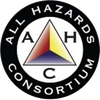DHS & FEMA support for Private Sector Integration w/states
National Doctrine and Policy Background
The National Incident Management System (NIMS) Preparedness Component specifically includes the private sector owners and operators and NGO’s as key elements of the preparedness activities within a community. “The private sector plays a vital role in emergency management and incident response and should be incorporated into all aspects of NIMS. Utilities, industries, corporations, businesses, and professional and trade associations typically are involved in critical aspects of emergency response and incident management.”
What's Next?
What is needed next is to enable the private sector to function effectively in a large scale incident and provide resources to the Incident Command System (ICS) within the National Response Framework (NRF) and expedite the recovery in support of the National Disaster Recovery Framework (NDRF).
DHS NIPP
The National Infrastructure Protection Plan (NIPP 2013) further developed the doctrine for Public-Private Partnerships in Tenet #5 and Call to Action #3 which lays the groundwork for Regional Partnerships that create the pre-incident capability development for private sector preparedness.
Specifically, Core Tenant #5 of the NIPP says that:
The National Plan appropriately creates a sense of urgency through a series of twelve Calls to Action (CTA). Three of them in particular support Tenant #5.
The federal government can provide the national framework and should encourage and support the development and sustainment of regional endeavors.
However, the States need regional enabling frameworks to build critical partnerships with the private sector and the private sector operators often need to work on a regional level with other operators from the government.
There is empirical evidence that regional Public Private Partnerships (PPP); built on private sector operational leadership approaches, can be a bridge to the public sector and give the private sector an equal role in the process.
The states must be an active leader in the process, but need a neutral facilitating mechanism – preferably one with a proven track record - to bridge the public and private cultures and tie together the interstate connections.
The National Incident Management System (NIMS) Preparedness Component specifically includes the private sector owners and operators and NGO’s as key elements of the preparedness activities within a community. “The private sector plays a vital role in emergency management and incident response and should be incorporated into all aspects of NIMS. Utilities, industries, corporations, businesses, and professional and trade associations typically are involved in critical aspects of emergency response and incident management.”
- NIMS further defines Preparedness Organizations and provides criteria for their roles.
- NIMS also recognizes the need for multi-jurisdictional organizations that create agreements pre-incident for mutual aid. They are encouraged to establish and maintain mutual aid agreements, adopt procedures and guidelines, train and exercise, and identify resources pre-incident.
- Private-sector organizations are encouraged to enter into assistance agreements with governments or other private-sector organizations to preposition processes and resources in anticipation of an incident. In addition, the private sector will bring best practices from industry to the emergency management and incident response field.
- Heretofore, the implementing doctrine and resources to implement these private sector mutual aid ideas have not been put in place.
- DHS and FEMA have put in place policies that support the NIMS private sector doctrine.
- There are a number of demonstration projects throughout the country that attempt to create some elements of the doctrine, but it is not widely accepted or documented to lead to a sustainable model that is effectively resourced.
- Public sector mutual aid has been well developed and is implemented through Intra-State Mutual Aid Systems and the Emergency Management Assistance Compact (EMAC).
- There have been efforts to put in place Business Emergency Operations Centers in the public sector to support situation awareness of the private sector.
What's Next?
What is needed next is to enable the private sector to function effectively in a large scale incident and provide resources to the Incident Command System (ICS) within the National Response Framework (NRF) and expedite the recovery in support of the National Disaster Recovery Framework (NDRF).
DHS NIPP
The National Infrastructure Protection Plan (NIPP 2013) further developed the doctrine for Public-Private Partnerships in Tenet #5 and Call to Action #3 which lays the groundwork for Regional Partnerships that create the pre-incident capability development for private sector preparedness.
Specifically, Core Tenant #5 of the NIPP says that:
- Regional and State, Local, Tribal, Territorial (SLTT) government partnerships are crucial to developing shared perspectives on gaps and actions to improve critical infrastructure security and resilience.
The National Plan appropriately creates a sense of urgency through a series of twelve Calls to Action (CTA). Three of them in particular support Tenant #5.
- CTA #3: Empower Local and Regional Partnerships to Build Capacity Nationally.
- CTA #8: Promote Infrastructure, Community, and Regional Recovery Following Incidents.
- CTA #12: Learn and Adapt During and After Exercises and Incidents.
The federal government can provide the national framework and should encourage and support the development and sustainment of regional endeavors.
However, the States need regional enabling frameworks to build critical partnerships with the private sector and the private sector operators often need to work on a regional level with other operators from the government.
There is empirical evidence that regional Public Private Partnerships (PPP); built on private sector operational leadership approaches, can be a bridge to the public sector and give the private sector an equal role in the process.
The states must be an active leader in the process, but need a neutral facilitating mechanism – preferably one with a proven track record - to bridge the public and private cultures and tie together the interstate connections.
